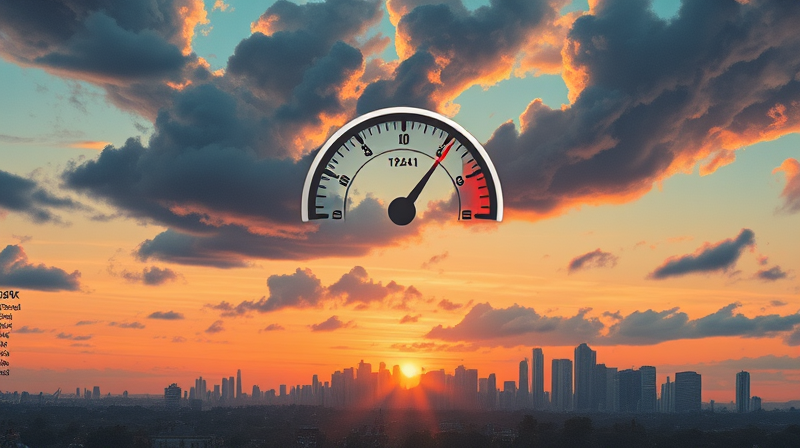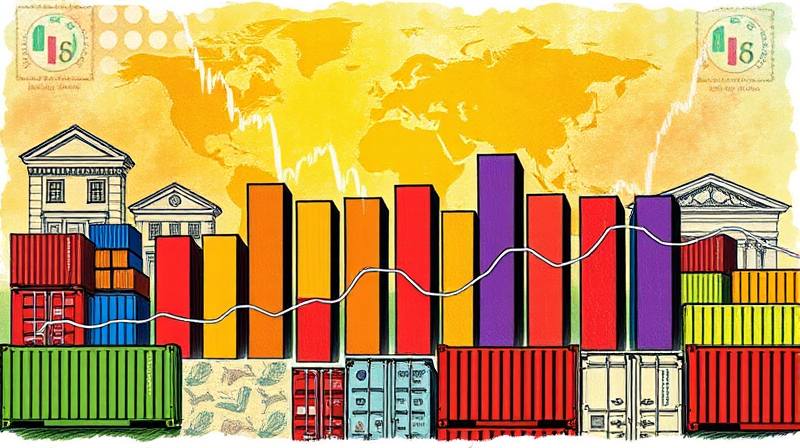
The CBOE Volatility Index, commonly called the VIX or "fear gauge," measures expected stock market volatility over the next 30 days. After closing at 16.59 on June 26, 2025, the index sits below its long-term average of 19.5, hinting at an unusually calm market environment.
Despite a one-year rise of nearly 29.5%, the VIX’s 14.3% drop in the last month and its decline from 20.62 to 16.59 in just six trading days underscore a shift toward apparent tranquility. But calm can breed overconfidence, and beneath the surface of these mid-teens readings lies the risk of widespread investor complacency.
Over the past month, the VIX has fallen by approximately 14.32%, settling in the mid-teens—a range historically associated with periods of low perceived risk. On June 20, 2025, the index peaked at 20.62; one week later, it retreated to 16.59.
Year-to-date, the VIX has climbed 29.47%, reflecting episodic spikes, but the recent downtrend suggests a return to comfort. By comparison, the all-time high of 96.40 on October 23, 2008, and the record lows around 8.56–9.14 in November 2017 illustrate the extreme oscillations this mean-reverting index can exhibit.
This table highlights the swift retreat from higher volatility levels. Historically, readings below 20 denote a tranquil backdrop, while spikes above 30 often correspond with acute market stress.
With the VIX comfortably under 20, many market participants may be underestimating potential risks. Investor complacency can be dangerous when protective hedges are relaxed and risk controls are loosened.
Data shows professional managers, who once underweighted equities, have shifted to neutral positions, particularly in the so-called "Magnificent 7" tech giants. This herd behavior suggests a broad assumption of continued stability, even as valuations stretch higher.
Periods of sustained low volatility have historically preceded sudden shocks. The February 2018 "Volmageddon" event saw rapid spikes as short volatility strategies unraveled. Such episodes underscore the mean-reverting index that self-corrects by snapping back toward its average after extremes.
When volatility is suppressed, unexpected shocks can catch investors off guard, triggering sharp corrections. In low-volatility environments, market liquidity can evaporate, amplifying price swings and exacerbating losses for those caught unprepared.
The U.S. equity market now represents roughly 75% of the global developed index, with the Magnificent 7 accounting for about 33% of the U.S. total. Such concentration heightens systemic risk if a handful of names falter.
Professional fund allocations have tilted back into these large-cap growth stocks, leaving defensive sectors underweighted. This shift may fuel overconfidence and concentrated positions in top stocks, creating vulnerabilities should sentiment turn.
Volatility can spike in response to policy announcements or geopolitical events. In March 2025, the VIX jumped to 26.92 amid U.S. tariff threats and global policy uncertainty, but quickly retreated as markets absorbed the news.
While markets often calm after digesting new information, a sustained or systemic shock—such as an abrupt economic downturn or unexpected geopolitical conflict—could drive the VIX sharply higher once more.
Current VIX levels suggest a complacent market. Though low volatility may foster confidence, investors should remain vigilant. The prospect of a return to higher volatility is ever-present, given the VIX’s history as a predictive sentiment measure rather than a directional indicator.
By embracing risk management and disciplined investing, market participants can navigate the cycles ahead. Remember that volatility is not the enemy but a natural part of market rhythms. Through preparedness through diversified strategies and hedging, investors can harness uncertainty as an opportunity rather than a threat.
References













